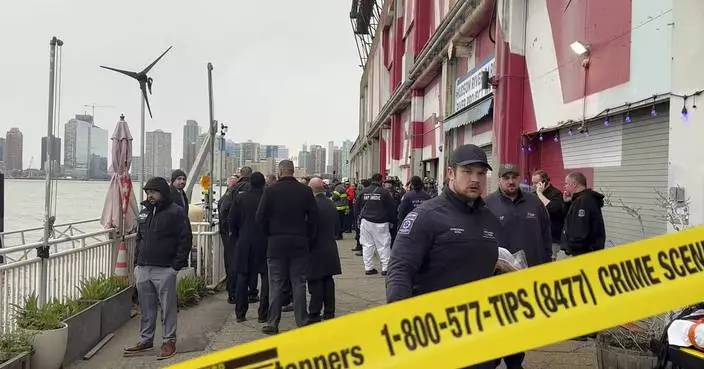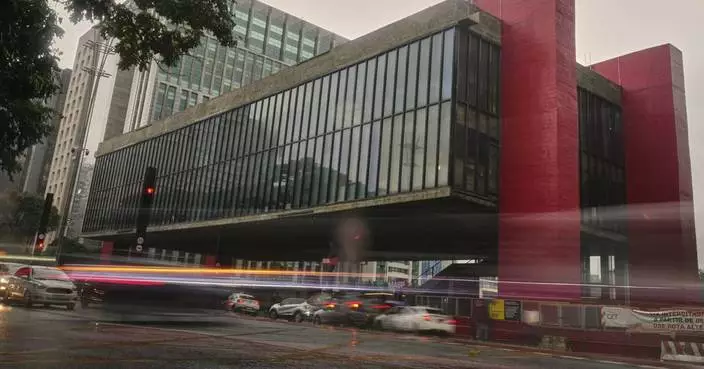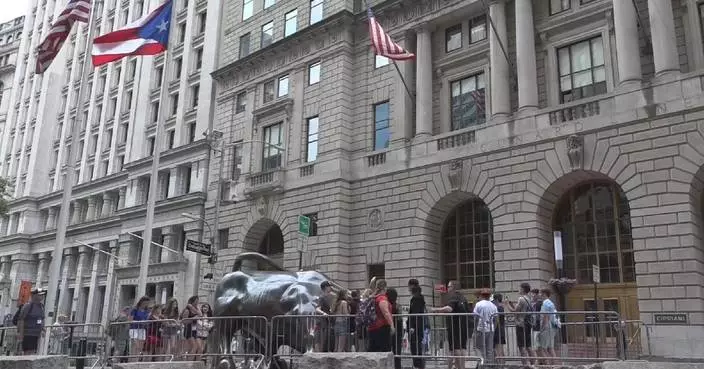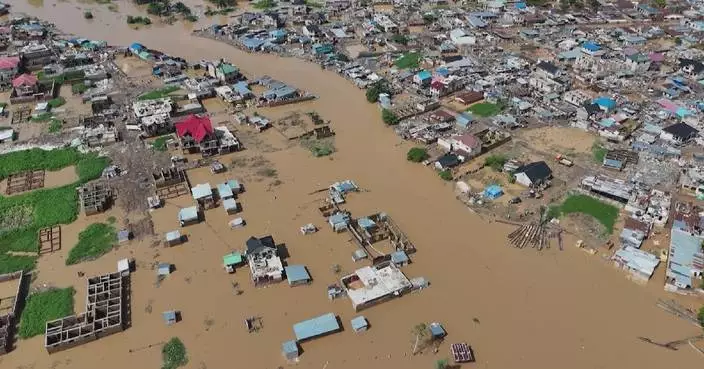MILWAUKEE (AP) — Right-handed pitcher Quinn Priester went from Boston to Milwaukee in a trade Monday that sends the Red Sox outfield prospect Yophery Rodriguez, a competitive balance selection in the upcoming draft and a player to be named.
In a move announced later Monday, the Brewers got outfielder Daz Cameron from the Baltimore Orioles in exchange for left-handed pitcher Grant Wolfram.
The addition of Priester gives some immediate help to a Brewers pitching staff decimated by injuries. Left-hander Nestor Cortes went on the injured list Sunday with a flexor strain in his throwing elbow, leaving Freddy Peralta as the only healthy pitcher among those projected to be in Milwaukee’s five-man rotation this season.
Boston adds a promising 19-year-old to its farm system and gets the 33rd overall pick in this year’s amateur draft.
Priester, 24, went 3-6 with a 4.71 ERA while making seven starts in 11 combined appearances with the Pittsburgh Pirates and Red Sox last season. He had 33 strikeouts and 14 walks in 49 2/3 innings.
He also went 4-2 with a 4.38 ERA in 16 starts at the Triple-A level. He struck out six, walked nobody and allowed two runs and six hits over four innings in his lone start with Triple-A Worcester this season.
The Pirates selected Priester with the 18th overall pick in the 2019 amateur draft. They traded him to the Red Sox last July for infielder Nick Yorke.
Rodriguez signed with the Brewers out of the Dominican Republic in 2023. He batted .250 with a .343 on-base percentage, seven homers and 60 RBIs in 110 games with Single-A Carolina last season. In three games with Single-A Wisconsin this year, Rodriguez batted .417 with a .462 on-base percentage.
Priester will report directly to the Brewers rather than going to the minors. The Brewers’ list of pitchers on the injured list includes Aaron Ashby, Aaron Civale, Robert Gasser, DL Hall, Nick Mears, Tobias Myers and Brandon Woodruff, as well as Cortes. Jose Quintana is working his way into pitching shape after signing a one-year, $4.25 million deal with the Brewers during spring training.
The Brewers initially made room for Priester on the 40-man roster by designating Wolfram for assignment. Wolfram then got sent to the Orioles in a trade for Cameron, the son of former MLB outfielder Mike Cameron.
Cameron, 28, hit .200 with a .258 on-base percentage, five homers, 15 RBIs and five steals in 66 games with the Athletics last season. He owns a .201 batting average, .263 on-base percentage, 10 homers, 39 RBIs and 14 steals in 139 career games with the Detroit Tigers (2020-22) and Athletics.
He will report to the Brewers' Triple-A Nashville affiliate.
Wolfram, 28, has never pitched in the majors. He had pitched in the Texas Rangers' farm system from 2018-24 before the Brewers signed him as a free agent in December.
AP MLB: https://apnews.com/hub/mlb

FILE - Boston Red Sox's Quinn Priester delivers a pitch to a Tampa Bay Rays batter in the first inning of a baseball game, Sept. 29, 2024, in Boston. (AP Photo/Steven Senne, file)
BAD SCHANDAU, Germany (AP) — Germany's reputation for efficiency is taking a hit from crumbling concrete. Cracks and collapses are also a risk to its economy, Europe's biggest.
The European Union's most populous member is trying to turn around a problem with worn-out infrastructure — including about 4,000 bridges that need modernizing or replacing over the next decade. All too frequently, unexpected scares about the state of bridges cause short-notice closures that bring local gridlock. Occasionally, it is worse than that.
In Dresden, a bridge dating back to 1971 partially collapsed in the middle of the night in September due to corrosion. No one was hurt, but the collapse snarled traffic and temporarily blocked shipping on the Elbe River. The remains of the Carola bridge have yet to be removed.
The collapse prompted checks on similarly designed bridges — including one in Bad Schandau, a small town further up the Elbe near the Czech border. It was shut abruptly to all traffic in November as a precaution, leaving locals with a 20-kilometer (12 1/2-mile) trip to the nearest road crossing until it reopened on Thursday — albeit with a 7.5-ton weight limit.
“The closure of this bridge was an absolute catastrophe for people in Bad Schandau,” said Steffen Marx, a civil engineering professor who led ultimately successful stress tests on the bridge. “It's the classic gridlock ... this is the only crossing along nearly 50 kilometers (30 miles) of river.”
Even as the situation eases in Bad Schandau, Berliners are steaming over the abrupt closure last month of a bridge on a busy highway after a widening crack was detected. It will now be demolished quickly. The outage snarled traffic in a large section of the capital, forced the weeks-long closure of a commuter railway line and prompted the government to cough up 150 million euros ($164 million) for its urgent rebuilding.
“The Germans are very good engineers. You would think that everything works,” said Monika Schnitzer, the head of an independent panel of economic advisers to the government. “At the same time, the Germans are also very good at saving — and they saved for a very long time particularly on this infrastructure, on bridges.”
Germany's prospective new government has moved to address the issue before it even takes office. Last month, the would-be coalition under conservative leader Friedrich Merz pushed through parliament a 500 billion-euro ($551 billion) fund, financed by borrowing, to pour money into creaking infrastructure over the next 12 years. Politicians see that as part of efforts to restore the stagnant economy to growth.
It's not just bridges: There are also decrepit schools, and a national railway has begun thorough but disruptive overhauls of major routes after years of underinvestment. Complaints about frequent delays and breakdowns on the railway have become a national sport.
The coalition agreement presented Wednesday states that “functioning infrastructure is the foundation for our country's prosperity, social cohesion and sustainability. So Germany needs an infrastructure booster — that applies to hospitals and schools as well as bridges and railways.”
On the roads, it promises that money will be provided “to resolve the renovation backlog on bridges and tunnels in particular.”
The outgoing government says a large number of bridges were already modernized under a program under way since 2022. But much remains to be done.
“Now that there's money, a growth spurt could actually be generated very quickly,” Schnitzer said. “But what is really necessary for this is that the money is spent quickly. And for that, we need much faster planning and approval procedures than we had so far.”
She noted that Germany has proven it can speed up its planning bureaucracy, notably in building its first liquefied natural gas terminals within months after Russia launched its full-scale invasion of Ukraine in 2022 and subsequently cut off pipeline gas supplies to Germany.
Outgoing government spokesperson Steffen Hebestreit pointed this week to the availability of construction companies and machines as a hurdle to quick bridge repairs and said Germany is “at its capacity limit.”
Marx said the situation of Germany's infrastructure is “quite critical.”
“It isn’t so much because we don’t invest enough — that’s one reason,” he said. “But from my point of view, the main reason is that we don’t take enough care of things. That we just don’t maintain infrastructure and we do far too little cleaning, repairing, strengthening, all things we do in our private buildings.”
He added that the huge new infrastructure fund is necessary, but he's concerned the money will be put only into demolishing and rebuilding the worst bridges rather than ensuring that others never get into that state.
“You can't win political points with maintenance and preservation — it's boring and not really spectacular,” Marx said. “But it becomes spectacular when you neglect it.”
Geir Moulson in Berlin contributed to this report.
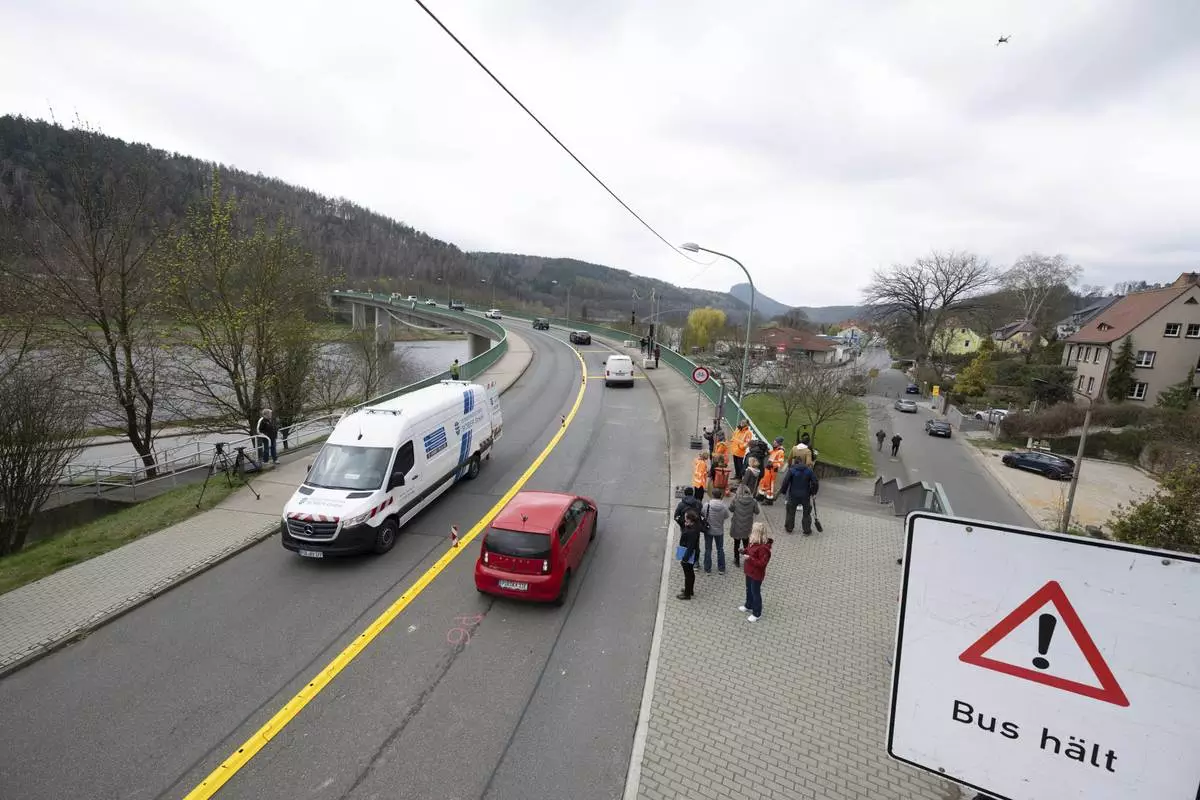
Passers-by and cars cross the Elbe bridge in Bad Schandau to mark the opening to traffic, in Dresden, Germany, Thursday April 10, 2025. (Sebastian Kahnert/dpa via AP)

Cars cross the Elbe bridge in Bad Schandau to mark the opening to traffic, in Dresden, Germany, Thursday April 10, 2025. (Sebastian Kahnert/dpa via AP)
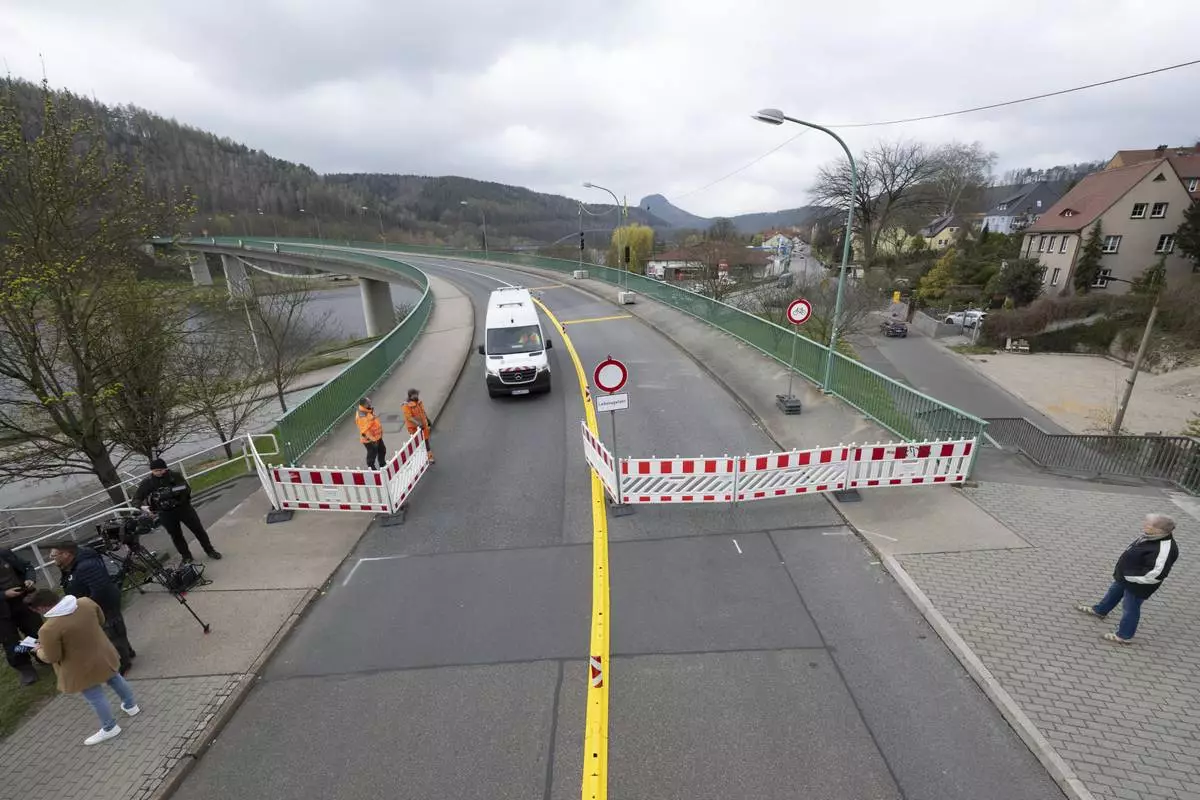
A traffic engineering vehicle crosses the Elbe bridge in Bad Schandau to mark the opening to traffic, in Dresden, Germany, Thursday April 10, 2025. (Sebastian Kahnert/dpa via AP)
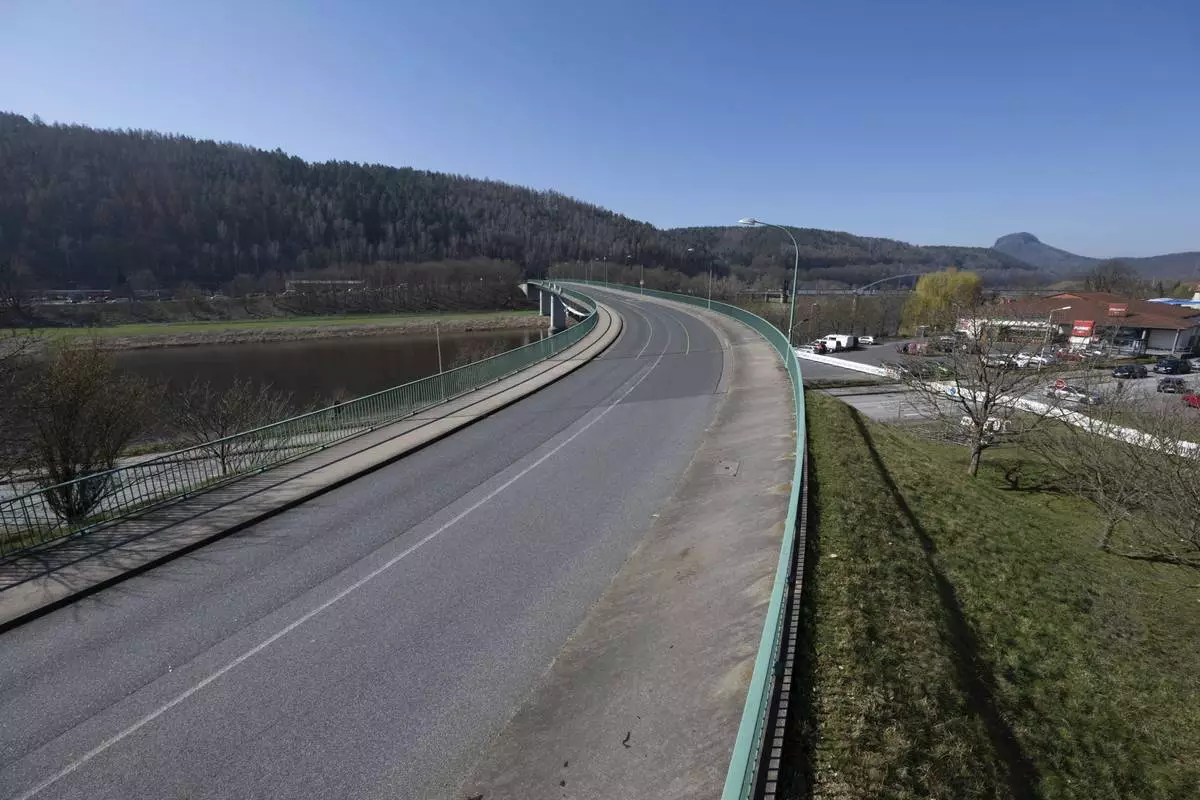
Cars parked next to the closed Elbe bridge a few days before its inauguration, in Bad Schandau, Germany, Friday March 28, 2025. (Sebastian Kahnert/dpa via AP)
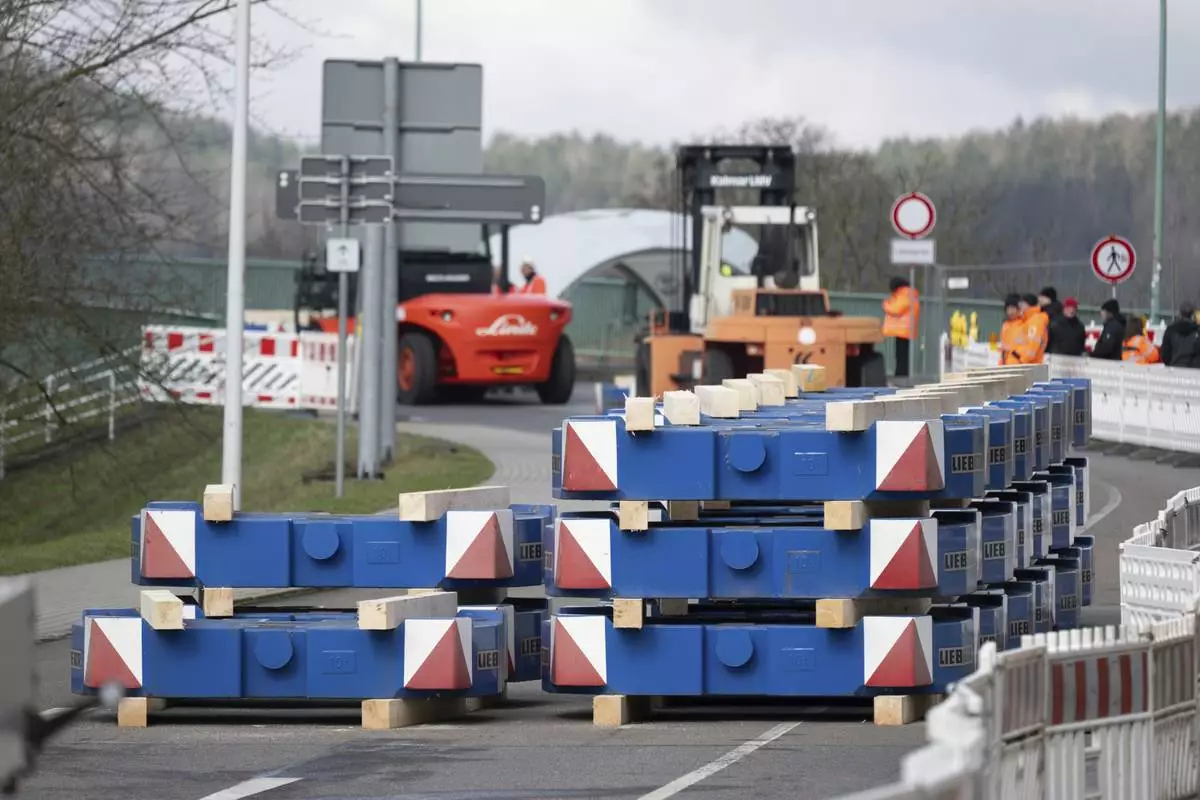
Weights are placed at the foot of the closed Elbe bridge as part of a load test, during a the three-day load test intended to show that the Elbe crossing can be reopened to traffic, in Bad Schandau, Germany, Tuesday April 1, 2025. (Sebastian Kahnert/dpa via AP)
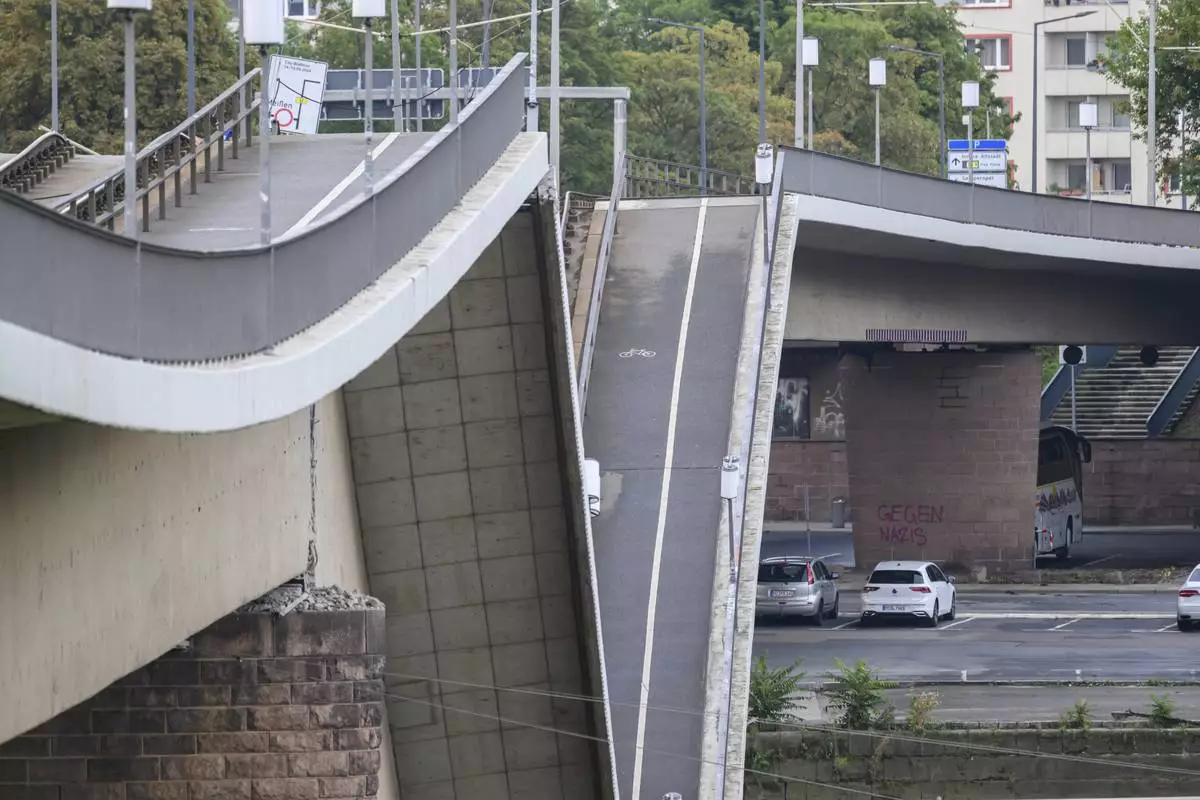
FILE - Parts of the Carola Bridge over the Elbe is seen collapsed in Dresden, eastern Germany, Wednesday, Sept. 11, 2024. (Robert Michael/dpa via AP, File)
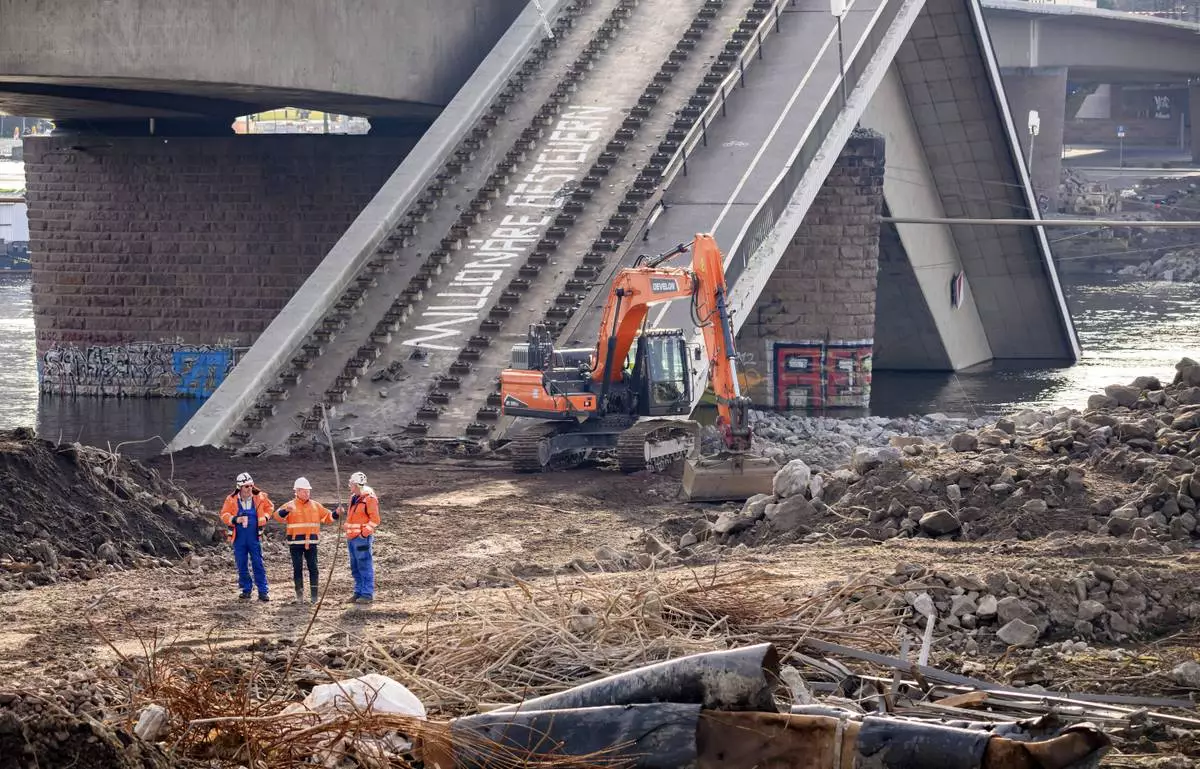
FILE - Experts stand in front of an excavator on the partially collapsed Carola Bridge on the Neustadt side during works, in Dresden, Germany, Thursday Jan. 30, 2025. (Robert Michael/dpa via AP, File)
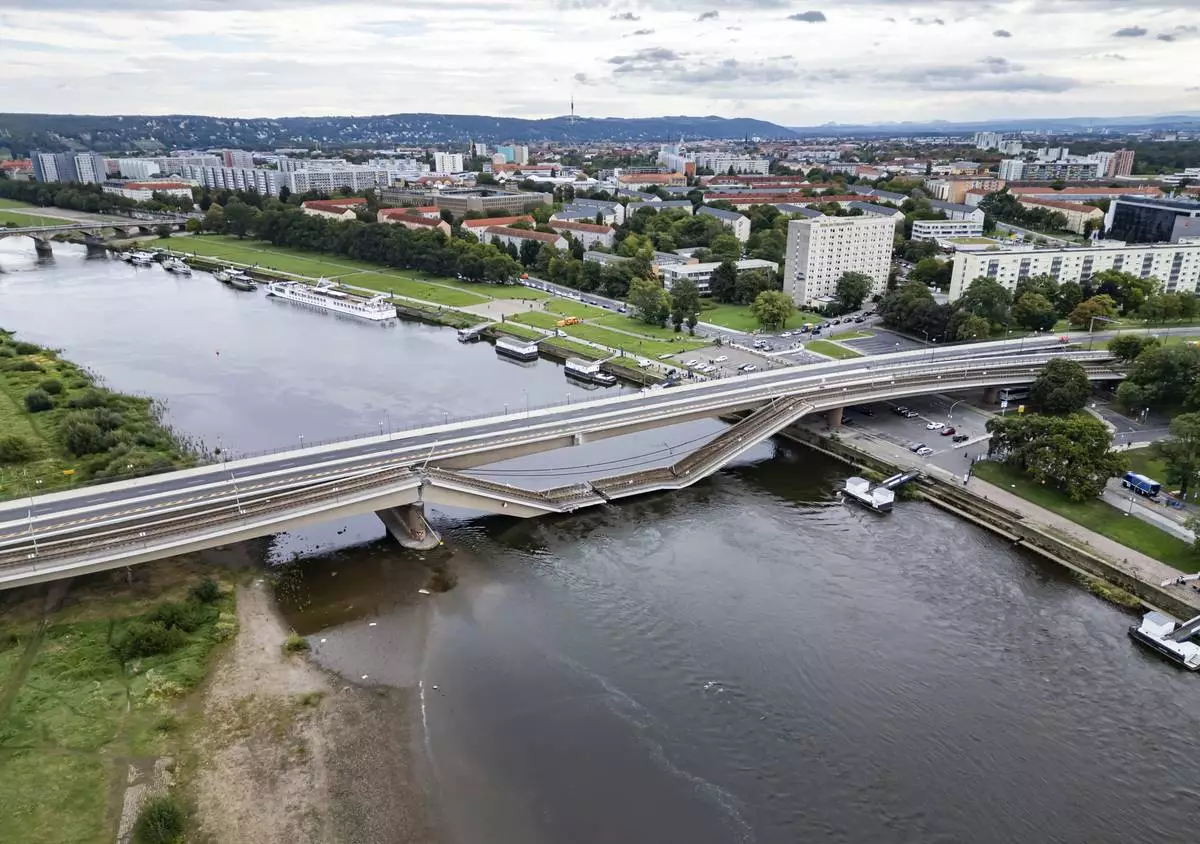
FILE - Parts of the Carola Bridge over the Elbe have collapsed in Dresden, Germany, Wednesday, Sept. 11, 2024. (Robert Michael/dpa via AP, File)
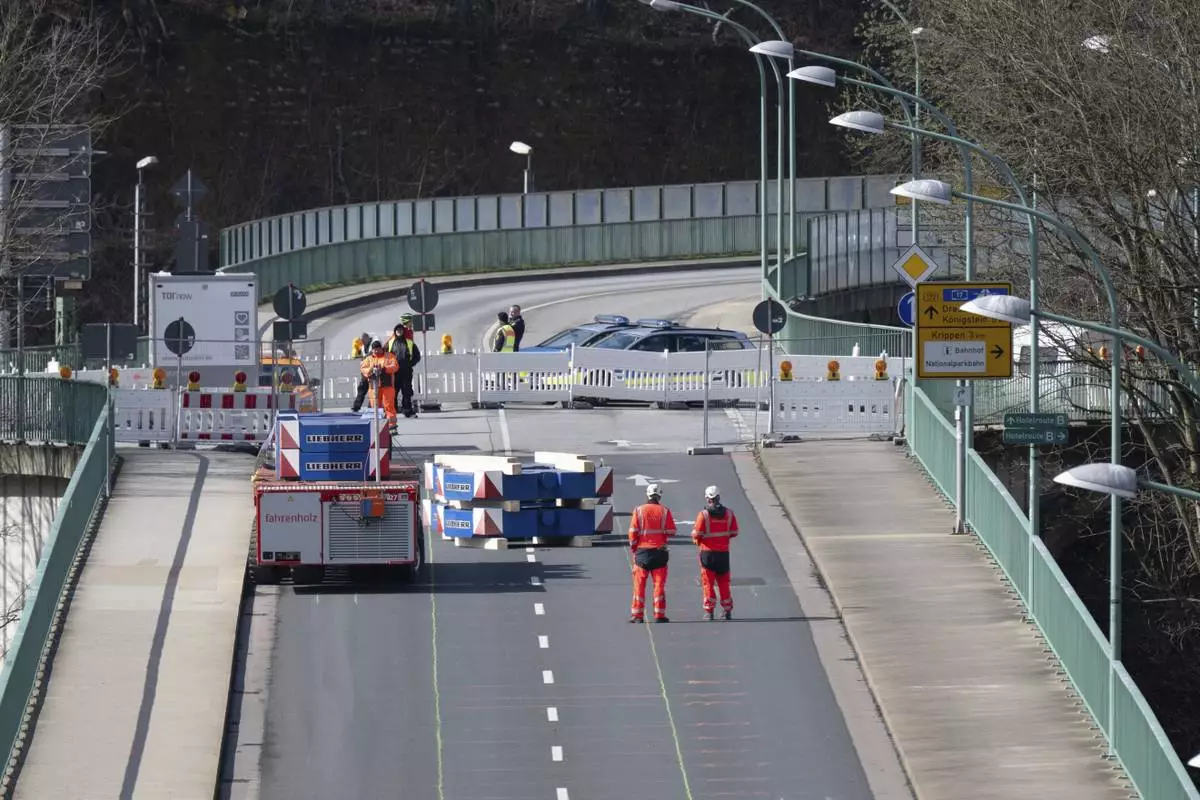
A heavy-duty module loaded with weights drives over the closed Elbe bridge as part of a three-day load test intended to show that the Elbe crossing can be reopened to traffic, in Bad Schandau, Germany, Tuesday April 1, 2025. (Sebastian Kahnert/dpa via AP)

















